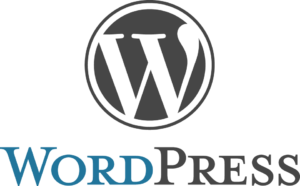I’ve been working on several SAP articles — including an ‘Ask Me Anything’ on packing proposals and a series on Backorders — but I wanted to share a few details about what I use to run my website. Read on for details on hosting, WordPress, and plugins.
A Little History
My first slice of web space was exactly 10 Mb of storage on my University of Georgia Arches account almost 20 years ago (yikes!). While woefully small by today’s standards, I was overjoyed at having a little web page to call my own. I fiddled with HTML and Flash and it even led to a small internship at a local software company. Since then several domain names came and went — SoymilkSuperglue (don’t ask), Utopiac, and WinterRain to name a few. And while I only spent a few years directly working with web technologies, I’ve always had a desire for my own web space to do…. whatever. And here I am.
Hosting and Domain Registration

I’ve used DreamHost for years for both domain registration and hosting. And while far from dreamy — i’ve experienced lackluster performance over the years –they offer a broad array of technologies to subscribers in their somewhat intuitive ‘web panel’. It’s affordable and it gets the job done.
I registered Romaniello.co several years ago. [Unfortunately, the .com and .net TLD’s are already taken. And what’s even more unfortunate is that they are completely barren at the time of this article.] Right now, my wife and I both have sub-domains to allow us both to do our own thing while sharing the same domain. Heck, maybe our kids may get their own sub-domains if that sort of thing is cool when they’re of age. Is it cool now? …moving on.
WordPress.org

I’ve grown to like WordPress.org over the years. For those not in-the-know, WordPress is a tool to design, build and manage a website. (Note: Please don’t be confused between WordPress.com and WordPress.org; WordPress.org is the tool and WordPress.com is their hosting service.) At one point, I would have called it a Content Management System (CMS), but I’m not sure if that terminology is used anymore. WordPress is available to DreamHost customers as one of their “one click” installs. Just select the domain (or sub-domain, in my case), click install, and follow the setup wizard to get going.
I find WordPress to be a very powerful solution. First, it has a HUGE user base which means it’s easy to find help online in the form of tutorials. Second, the solution is extensible, meaning you can build onto the solution with a large array of plug-ins provided by a healthy developer community. Third, it’s based on modern web standards, meaning that you won’t be left in the dust as the technology improves. Lastly, even though it is a template-based solution, you can still easily access and modify the HTML and CSS foundation of your site to make it look exactly the way you want it to.
That’s not to say the WordPress is perfect. While DreamHost’s one-click install is quick and easy, users new to WordPress may encounter a steep learning curve. A vast array of templates are available directly through the WordPress front-end — most of which look great. But tweaking the themes is often limited to changing basic colors and layout. Even adding a custom logo to your website — something that most everyone will want — is difficult with most of their themes. I’ve found that changing fonts and colors is pretty much impossible without either getting your hands dirty in the CSS editor — a very advanced tool for most users — or, finding and installing an additional plug-in.
Speaking of themes, I’m taking advantage of the default ‘Twenty Fourteen’ theme which is provided by Automattic (the developers of WordPress) with a new install. Actually, I created a “child theme” of Twenty Fourteen because I needed to tweak some things. Don’t know what a ‘child theme’ is? …like I said, it can be a steep learning curve for new users.
WordPress Plug-ins
I mentioned WordPress’s extensibility earlier. There is a vast number of plug-ins available to help change the way your site looks and functions. Here are the plug-ins that I use to drive my user experience:
[table]
Thumbnail,Name,How I Use It
 ,Akismet,”To be honest, this was pre-installed in my WordPress. However, it seems to be very effective at blocking spam comments and fraudulent log-in attempts.”
,Akismet,”To be honest, this was pre-installed in my WordPress. However, it seems to be very effective at blocking spam comments and fraudulent log-in attempts.”
 , Easy Table, “This is a great plug-in if you plan to use a lot of tabular data structures on your site. I use it in various locations, but all of my SAP Reference Guide pages make use of it (as does this table here.)”
, Easy Table, “This is a great plug-in if you plan to use a lot of tabular data structures on your site. I use it in various locations, but all of my SAP Reference Guide pages make use of it (as does this table here.)”
 , Fourteen Colors, “This is a plug-in that makes it easy to customize the colors in the ‘Twenty Fourteen’ theme for WordPress.”
, Fourteen Colors, “This is a plug-in that makes it easy to customize the colors in the ‘Twenty Fourteen’ theme for WordPress.”
 , Google Analytics, “This plug-in makes it easy to integrate with Google’s great web reporting tools. It *IS* a bit overkill for what I need; the baked-in reporting in WordPress’s JetPack toolset provides the basics. But Google adds a lot of nice metrics which I use occasionally.”
, Google Analytics, “This plug-in makes it easy to integrate with Google’s great web reporting tools. It *IS* a bit overkill for what I need; the baked-in reporting in WordPress’s JetPack toolset provides the basics. But Google adds a lot of nice metrics which I use occasionally.”
 , JetPack by WordPress.com, “JetPack is an essential toolset which includes too many functions to name individually. Since it is modular, you can switch on only the functions you need. I like the ‘Sharing’ function that embeds links to allow visitors to share posts and pages to various social networks.”
, JetPack by WordPress.com, “JetPack is an essential toolset which includes too many functions to name individually. Since it is modular, you can switch on only the functions you need. I like the ‘Sharing’ function that embeds links to allow visitors to share posts and pages to various social networks.”
 , Menu Icons, “This is a tool that allows you to incorporate icons into the menu on your website. The Twitter, LinkedIn, and Untappd icons in the menu above are some examples.”
, Menu Icons, “This is a tool that allows you to incorporate icons into the menu on your website. The Twitter, LinkedIn, and Untappd icons in the menu above are some examples.”
 , Ninja Forms, “This is a popular tool for generating and managing forms on your website. Currently, I only use it for my ‘Ask Me Anything’ form.”
, Ninja Forms, “This is a popular tool for generating and managing forms on your website. Currently, I only use it for my ‘Ask Me Anything’ form.”
 , Revive Old Post, “This tool integrates with my Twitter account. I set some parameters and the tool automatically Tweets links to some of my older posts.”
, Revive Old Post, “This tool integrates with my Twitter account. I set some parameters and the tool automatically Tweets links to some of my older posts.”
 , Similarity, “This tool uses categories and tags from your WordPress posts and pages to find and display similar posts and pages in a list to the right.”
, Similarity, “This tool uses categories and tags from your WordPress posts and pages to find and display similar posts and pages in a list to the right.”
 , WP to Twitter, “This is another tool that integrates with Twitter to auto-Tweet links as soon as they’re published.”
, WP to Twitter, “This is another tool that integrates with Twitter to auto-Tweet links as soon as they’re published.”
[/table]
These are not all of the plug-ins that I’ve used. I’ve had to wade through the available options (their numbers are legion) and select the ones that work best for my purposes. If you have a favorite plug-in, please feel free to mention it in the comments below.
Conclusion
There you have it. This is what makes my website hum. There are lots of options out there for building and maintaining a website — Squarespace, and Wix to name a couple — and LOADS of options for hosting. Please let me know if you have any favorites in the comments below. Thanks for reading.










